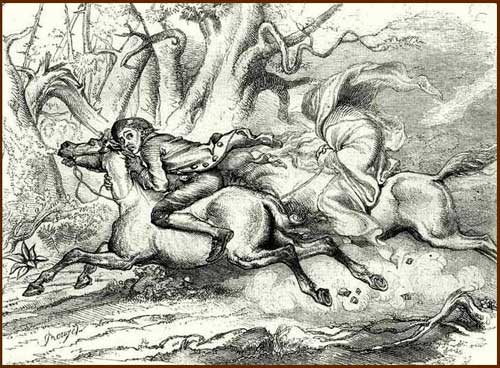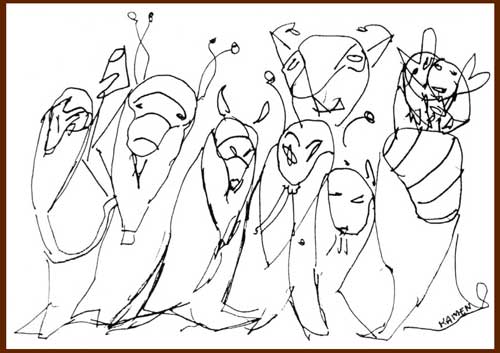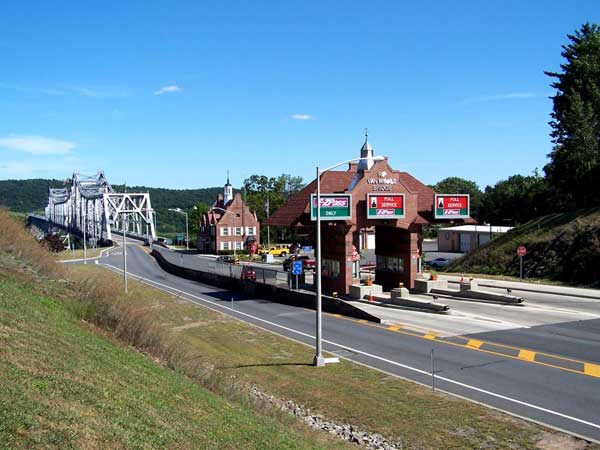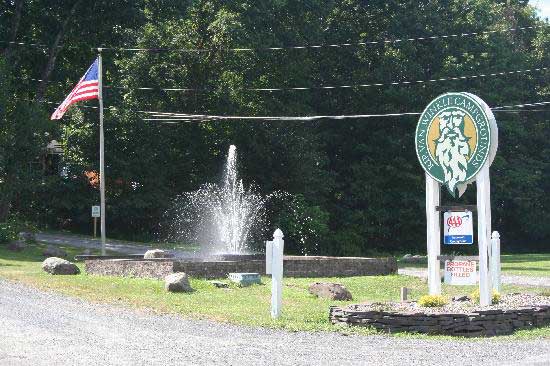From Wikepedia: The Legend of Sleepy Hollow
The story of Rip Van Winkle is set in the years before and after the American Revolutionary War. In a pleasant village, at the foot of New York's "Kaatskill" Mountains, lives the kindly Rip Van Winkle, a colonial British-American villager of Dutch descent. Rip is an amiable though somewhat hermitic man who enjoys solitary activities in the wilderness, but is also loved by all in town—especially the children to whom he tells stories and gives toys. However, a tendency to avoid all gainful labor, for which his nagging wife (Dame Van Winkle) chastises him, allows his home and farm to fall into disarray due to his lazy neglect.
One autumn day, Rip is escaping his wife's nagging, wandering up the mountains with his dog, Wolf. Hearing his name being shouted, Rip discovers that the speaker is a man dressed in antiquated Dutch clothing, carrying a keg up the mountain, who requires Rip's help. Without exchanging words, the two hike up to an amphitheatre-like hollow in which Rip discovers the source of previously-heard thunderous noises: there is a group of other ornately-dressed, silent, bearded men who are playing nine-pins. Although there is no conversation and Rip does not ask the men who they are or how they know his name, he discreetly begins to drink some of their liquor, and soon falls asleep.
He awakes in unusual circumstances: it seems to be morning, his gun is rotted and rusty, his beard has grown a foot long, and Wolf is nowhere to be found. Rip returns to his village where he finds that he recognizes no one. Asking around, he discovers that his wife has died and that his close friends have died in a war or gone somewhere else. He immediately gets into trouble when he proclaims himself a loyal subject of King George III, not knowing that the American Revolution has taken place; George III's portrait on the town inn has been replaced by that of George Washington. Rip is also disturbed to find another man is being called Rip Van Winkle (though this is in fact his son, who has now grown up).
The men he met in the mountains, Rip learns, are rumored to be the ghosts of Hendrick (Henry) Hudson's crew. Rip is told that he has apparently been away from the village for twenty years. An old local recognizes Rip and Rip's now-adult daughter takes him in. Rip resumes his habitual idleness, and his tale is solemnly taken to heart by the Dutch settlers, with other hen-pecked husbands, after hearing his story, wishing they could share in Rip's good luck, and have the luxury of sleeping through the hardships of war.
Characters in the story of Rip Van Winkle
Rip Van Winkle – a henpecked husband who loathes 'profitable labor'.
Dame Van Winkle – Rip Van Winkle's cantankerous wife.
Rip – Rip Van Winkle's son.
Judith Gardenier – Rip Van Winkle's daughter.
Derrick Van Bummel – the local schoolmaster and later a member of Congress.
Nicholas Vedder – landlord of the local inn.
Mr. Doolittle – a hotel owner.
Wolf – Rip's faithful dog
The Ghosts of Henry Hudson and his crew – Ghosts that share purple magic liquor with van Winkle.
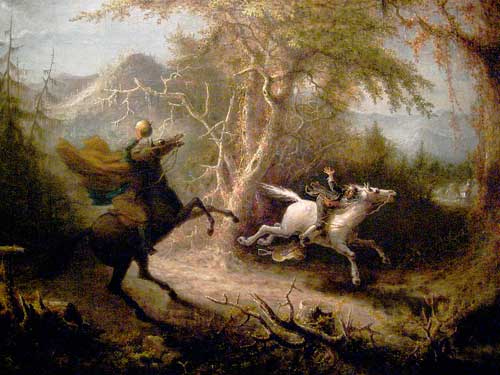
The Headless Horseman pursuing Ichabad Crane, (1858) by Jon Quidor
|
